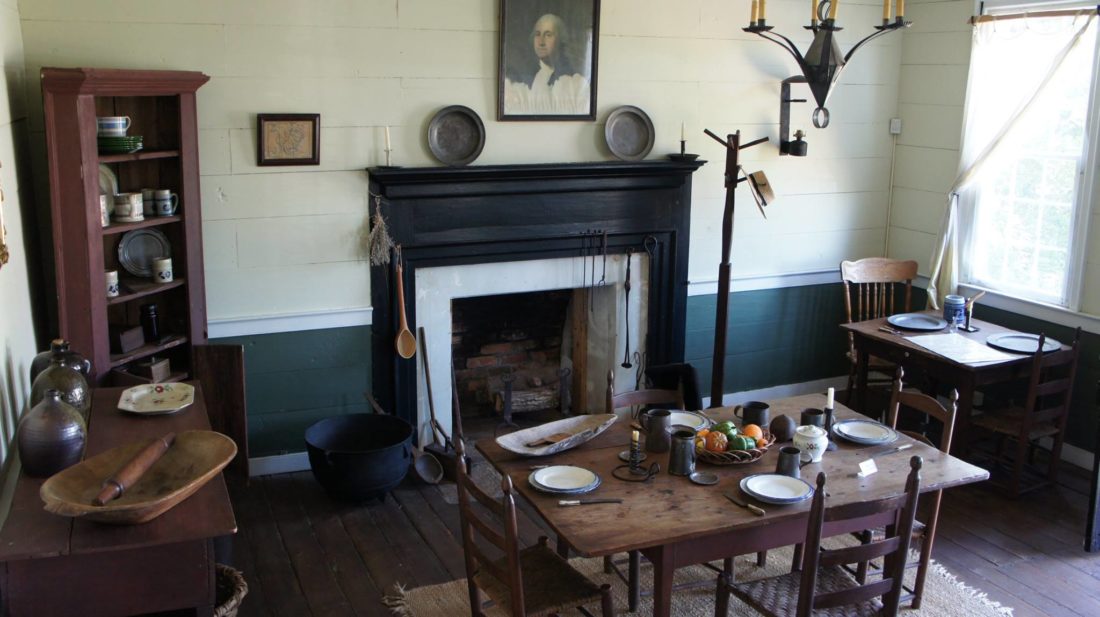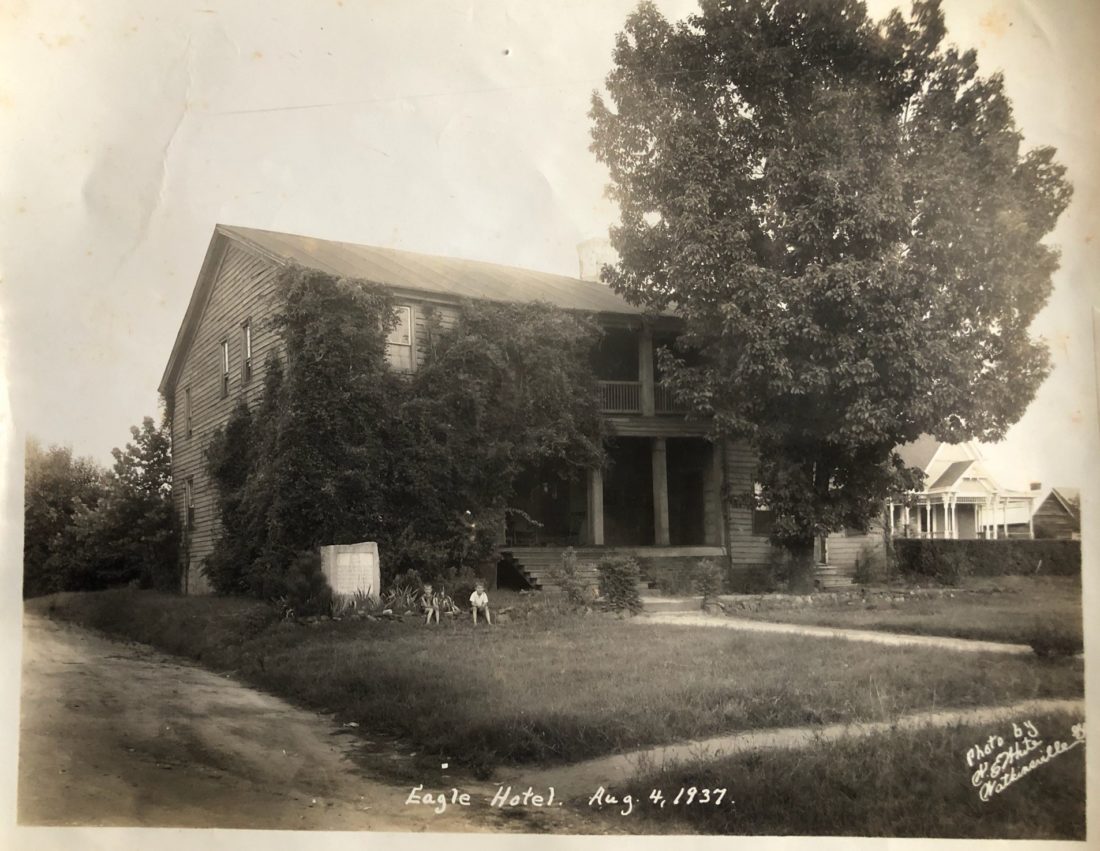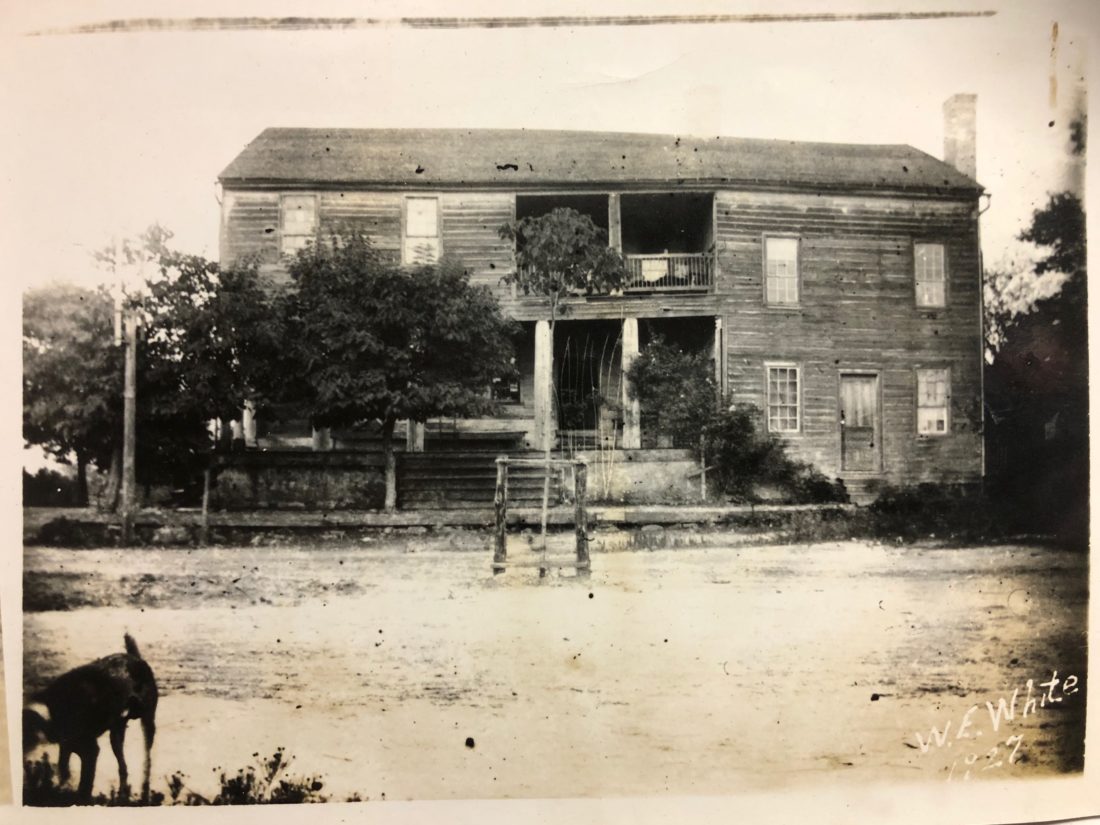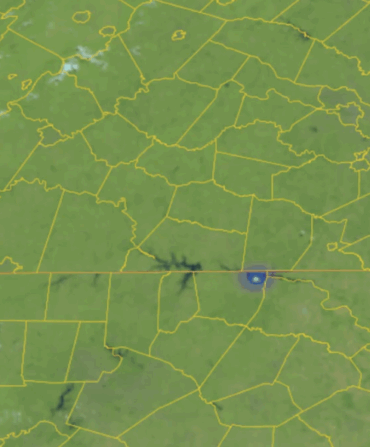Legend holds that when the University of Georgia trustees were searching for a spot to establish the school in the late 1700s, they considered Watkinsville, then a stagecoach crossroads ten miles south of modern-day Athens. Its one downside, according to the trustees: the Eagle Tavern. “The tavern had drinking, gambling, dancing, and music,” says Joann Hubert, who works at the Oconee County Welcome Center. “So, the trustees opted for a farm in the middle of nowhere.” (Ironically, that farmland is now downtown Athens, home to roughly eighty bars in a single square mile.)
Today, the Eagle Tavern stands as a museum heralding its riotous history. “Back in the early 1800s, you couldn’t travel far or fast, so there were these little taverns and stagecoach stops all throughout Georgia,” Hubert says. “This is one of the last remaining examples.” A center of public life, the tavern had one door for men to enter the bar and a second for women to visit the trading post. “It was located right across from the courthouse, so court day was like a festival,” Hubert says of the locals who would stop in for a drink and to see which neighbor might end up in the stocks across the street.

Upstairs rooms were reserved for paying stagecoach passengers—although two or three strangers would have to share a bed—but buying a dram of mead, currant wine, or rose water at the bar also bought patrons the right to lay a pallet on the barroom floor. A last call, though, was never guaranteed. In fact, an itinerant preacher once wrote in his diary after spending a night above the late-night revelers that he prayed to never be sent back to Watkinsville again.
During the pandemic, the museum closed for critical foundation repairs, but it will reopen in October. In the meantime, walk through Visit Oconee County’s virtual tour to see the museum’s period furniture and trinkets including rope beds, trunks, and snuff boxes in the upstairs sleeping quarters. Checker boards, serving ware, and dining tables remain across from the downstairs bar, which is still encased by the wooden bars used to protect the alcohol at night. A few original artifacts include a violin and top hat that were found in the attic during restoration work in the 1960s, likely left by guests a century before.

Another relic Hubert and her colleagues preserve: the recipes that travelers would have enjoyed at the tavern, which can be found compiled from memory and research by locals in a 1980 community cookbook. Find a few examples here:
Currant Wine
“Gather your currants when weather is dry and they are full ripe. Strip them carefully from stalks and put them in wooden vessel and bruise well with wooden pestle, and let stand twenty four hours. After which strain, and add three pounds of pounded sugar to every four quarts of the liquor and then shake and stir it well. Fill the vessel and put a quart of brandy to every five gallons. As soon as it is fine, bottle and cork it off.”
Rose Water or Violet Water
An 1875 recipe from Isabella Billups Johnston, whose family once owned the Eagle Tavern
“Take same weight of rose or violet petals as brandy. Place in decanter and cork. Shake daily for ten days. Then add a pint of rainwater. Strain into your permanent decanter.”
Cure for Baldness
“Brew a strong tea made from the bark scrapings of an old dogwood tree and apply once a day and it will be remarkably effective. It must be rubbed in well. Make the tea and keep in a fancy capped bottle for use.”









